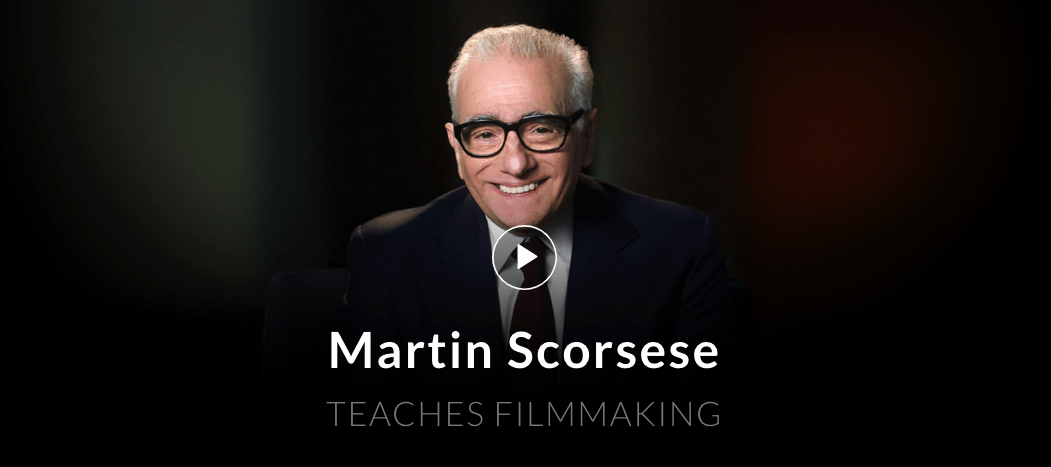Martin Scorsese Masterclass Review- Is it Worth It?
In this review, we will take an in-depth look at the Masterclass: “Martin Scorsese Teaches Filmmaking”. We will give you a behind the scenes look at the coursebook, show you the lessons that are included in the course, as well as helping to answer the question– of is this course a good choice for you?
Disclaimer: This article contains affiliate links. So if you choose to purchase through our links we will receive compensation. Thanks in advance if you decide too! 🙂
About Our Review Process
First off, If you are new to RealReviewHub.com then we want to make sure we tell you how this review was made. We pride ourselves on offering in-depth reviews of products we’ve actually tried and used ourselves. This course is no different. So, we want you to know that we purchased an all-access pass to Masterclass for the past two years to enable us to make these reviews as helpful as possible. Here is a copy of our receipt.

About Our Reviewer- A Independent Feature Film Maker
Also, our reviewer comes from Dominick Bagnato someone with quite a bit of experience when it comes to making independent films, so we are very lucky to be able to give you a unique perspective on this course. Dominick is a graduate of New York University’s Tisch School of Arts in Film. He has also written and directed several short films and one full-length feature film. “A Convenient Truth“, as well as having written: Making Your First Feature Film: Lessons I Learned the Hard Way
Our Video Review & Behind The Scenes Look At The Course
Masterclass Course Overview- Martin Scorsese Teaches Filmmaking
In this 30 Lesson Course, you will learn Filmmaking from Martin Scorsese the director of GoodFellas, The Departed, and Taxi Driver. If you are a fan of Martin’s work, then this is your chance to learn some of the iconic filmmaker’s philosophy on filmmaking, in his first-ever course.
Get a short preview here.
How Much Does it Cost?
A single License to this course can be had for $90. You can get an ALL-ACCESS PASS to all Masterclasses for 1 YEAR for $180
The Lessons Included
- 01 Introduction– Meet your new instructor: Oscar-winning director Martin Scorsese. Martin explains the goals of his MasterClass and talks about the importance of staying true to yourself on your filmmaking journey.
- 02 Beginnings– Martin explains how he realized that filmmaking was his true calling in life. He also talks about the importance of watching the old masters of cinema, from Orson Welles to Max Ophüls.
- 03 Martin’s Education– Martin teaches you to appreciate the value of every shot using the lessons he learned from his tough—but inspirational—professor at NYU.
- 04 Discovering Your Process– There is no set process for filmmaking, but in this lesson, Martin offers you a glimpse of what his own process looks like. Learn to let your film take on its own life and always remain open to unexpected changes that could add value to a scene.
- 05 Channeling Your Influences– Martin encourages you to take inspiration from the work of other directors and discusses the significance of referencing other films in your own work.
- 06 Developing Your Style– Martin teaches the tenets of visual literacy and elaborates on the hallmarks of his style, including previsualization with storyboards, the use of voice-over, and the influence of documentary on his feature films.
- 07 Directing & Technology– Martin connects the atmosphere in which he first started making movies to the current climate of filmmaking, teaching you how technological advances can both help and hinder your creative process as a director.
- 08 Finding the Story– Martin teaches you how to see the inherently cinematic elements of your daily life and how to identify the themes and stories you are most drawn to.
- 09 Working With The Script– Martin shows you his process for reading scripts and how he goes about forming ideas. He also teaches you important lessons regarding research and explains how to further develop your script in rehearsal.
- 10 Casting Actors- Martin explains the significance of casting and offers his wisdom on how to interact with your potential actors, both individually and as part of a group. He also shares which performances he uses as models and what he looks for in an actor.
- 11 Directing Actors– Martin teaches you the importance of getting in front of the camera as a director. You’ll also learn how to build a trusting relationship with your actors, how to make time for them to experiment, and when to stop talking and start to shooting.
- 12 Locations– Martin shows you what you should look for when scouting locations and how to turn your location limitations into advantages.
- 13 Production Design– Martin teaches you how to reflect the themes of a story through production design. Learn how to bring the world of your film to life and when to take artistic license when depicting historical periods.
- 14 Costume Design– Learn how to let character dictate costume and how to collaborate with actors to find the perfect clothing for roles.
- 15 Understanding Cinematography– Martin teaches you how to work with your cinematographer and tells you the best way to learn—by asking your DP questions.
- 16 Shooting Low-Budget Films– Discover Martin’s experience with low-budget filmmaking collaborating with cinematographer Michael Ballhaus. Learn how to creatively get the shots you need, even under tight budget and schedule constraints.
- 17 Working With Crew– Learn the differences between working with a small, core crew and a big one, and how to empower individual members of your crew.
- 18 Editing: Part 1– Martin reveals the magic of the edit room, and shares the qualities you should look for in an editor. He also prepares you for the continuous evolution that is intrinsic to the editing process.
- 19 Editing: Part 2- Martin teaches the importance of being in sync with your editor and expounds on a valuable lesson: You may have to cut the scenes you love.
- 20 Color– Martin gives you a lesson on the historic use of color in cinema and explains his use of color in his own films.
- 21 Choosing Black and White– Martin discusses the evolution of black and white film and how he arrived at the decision to make Raging Bull in black and white.
- 22 The Importance of Sound Design- Martin teaches you his approach to sound design: enter the editing room with the intention of cutting away sound instead of adding it. Learn how to create atmosphere with sound design, as well as how to use sound to solve editing problems.
- 23 The Power of Music- Martin shows how music serves as part of the spiritual lives of his characters and talks about the films whose music influenced him, from director Kenneth Anger’s independents to the traditional scores of Hollywood films.
- 24 Promoting Your Film- Martin recommends promotional strategies and teaches you how to identify and target your film’s potential audience.
- 25 Scene Discussion: Barry Lyndon– Martin analyzes the first scene of Stanley Kubrick’s Barry Lyndon. Watch and learn as Martin breaks down the use of natural lighting and voice-over. Discover how every image in the scene embodies the structure of an entire historical moment.
- 26 Scene Discussion: Out of the Past– Martin analyzes the visual language of this scene from Jacques Tourneur’s Out of the Past, explaining the director’s use of light and shadow. Martin discusses camera tilts and Robert Mitchum’s performance in this scene.
- 27 Scene Discussion: Jules and Jim- Martin dissects the voice-over in François Truffaut’s film, explaining how it pushes the story forward and gives the audience copious information about the characters. Martin also analyzes the composition of frames and the effect of the music.
- 28 Scene Discussion: Vertigo- Martin discusses color and background action in this scene from Alfred Hitchcock’s Vertigo. Learn how point-of-view shots and specific angles contribute to the emotional power of the scene.
- 29 Scene Discussion: 8 1/2- Martin analyzes Federico Fellini’s choices in composition and lighting in this scene from 8 1/2, and shows how these impact our understanding of the protagonist. Watch and learn as Martin breaks down camera movement and the blocking of actors.
- 30 Finding Your Way- In his parting words of wisdom, Martin encourages you to find your own way and never lose sight of the creative spark that inspires you on each film.
What Resources are Included in the Course?
- The course includes 30 video lessons
- A Full Course book
- An online Class community
Related Questions
Who is this course best for?
If you are an up and coming or aspiring filmmaker that appreciates Martin Scorsese’s work, then this course may be a great choice for you. If you think about it, how much would you pay for an opportunity to chat with this award winning filmmaker for 15 Minutes?
Well in this course you don’t get a one on one conversation but you do get several hours of direct coaching from Martin. This is something that most people couldn’t pay for if they were afforded the opportunity.
With this course, you can continue your quest for continued learning and refining your craft directly from highly successful filmmaker. If you are fan of Martin’s work and you are looking to pick up some tidbits from a professional director, then this might be the self-paced course for you.
You can take the class at your own pace from the comfort of your own home.






